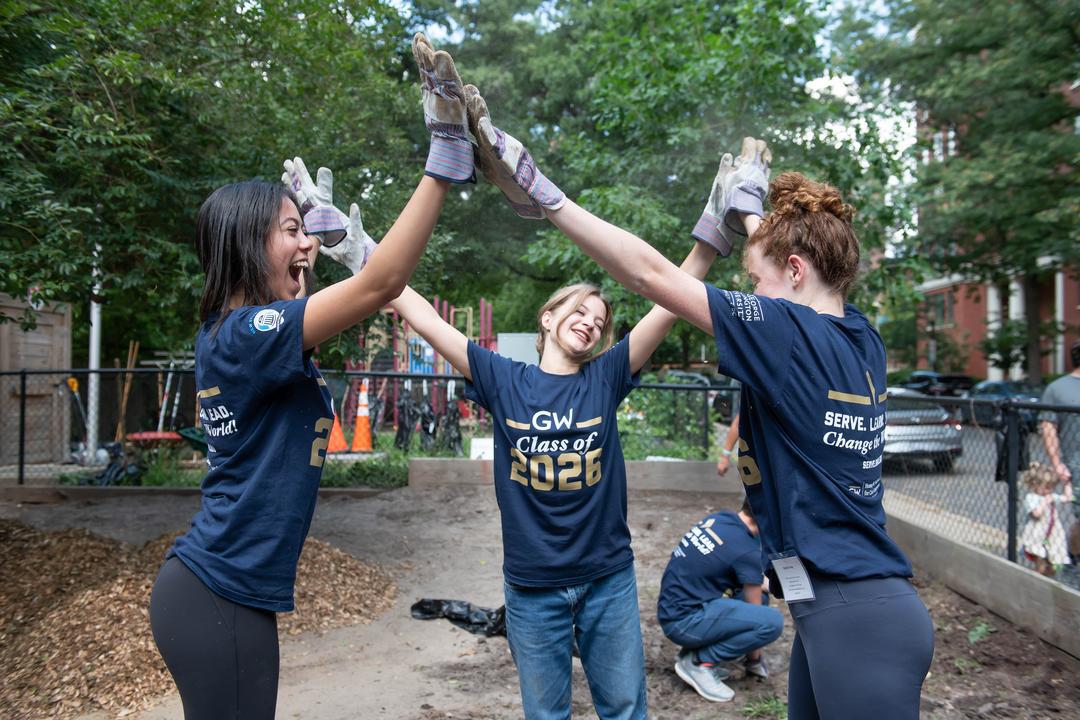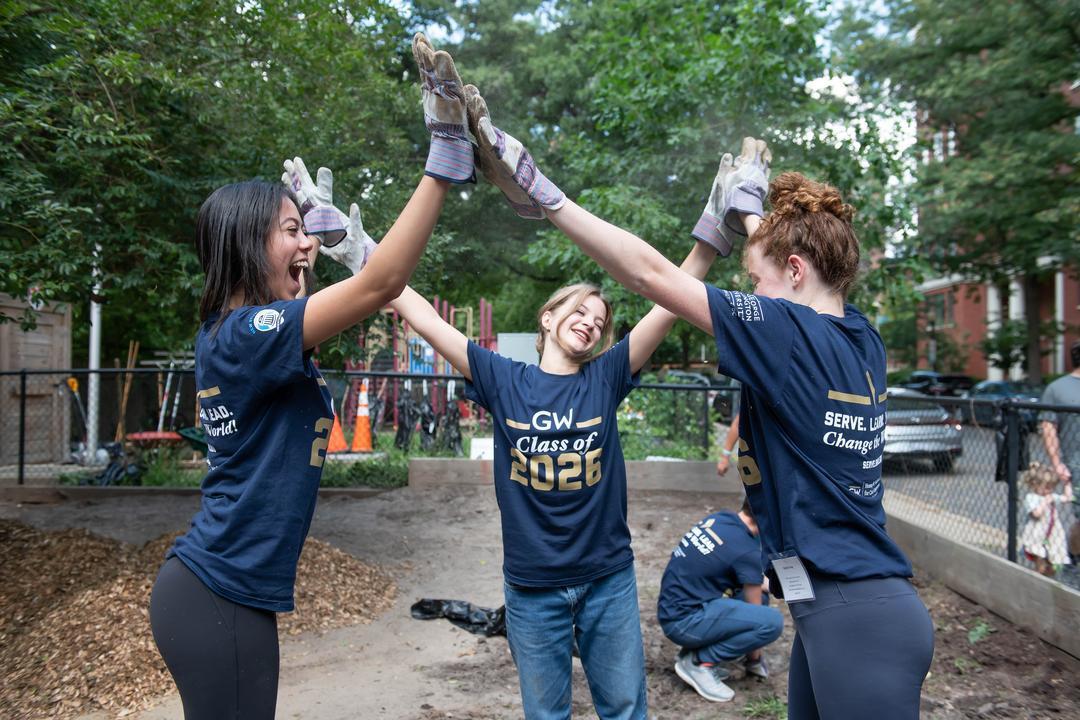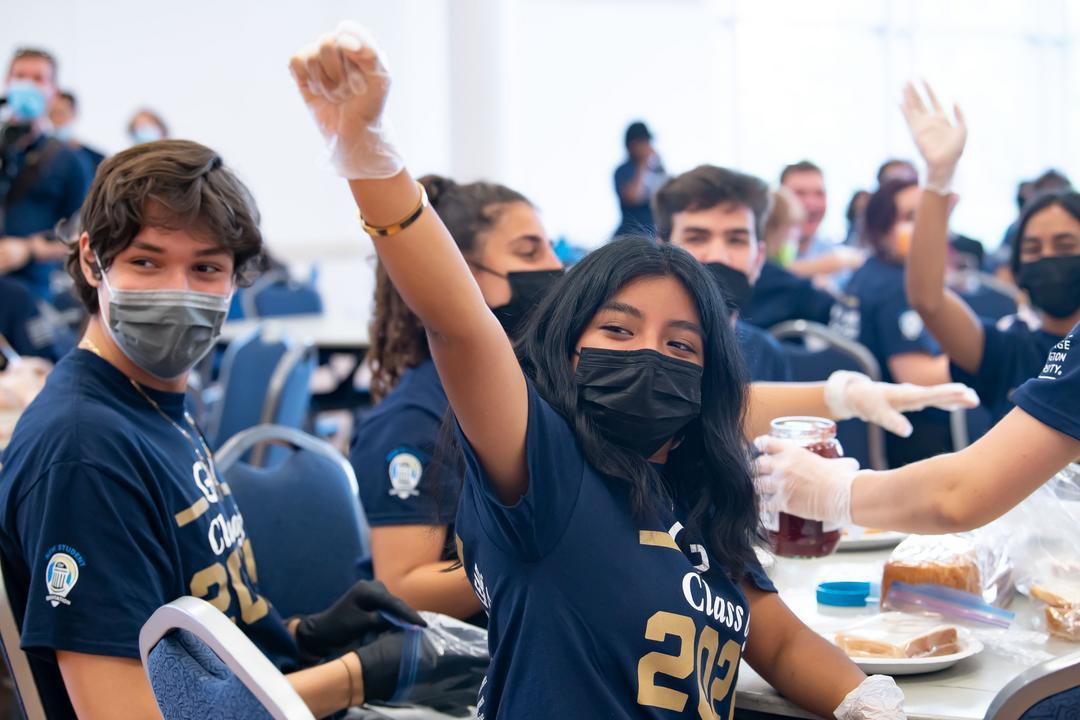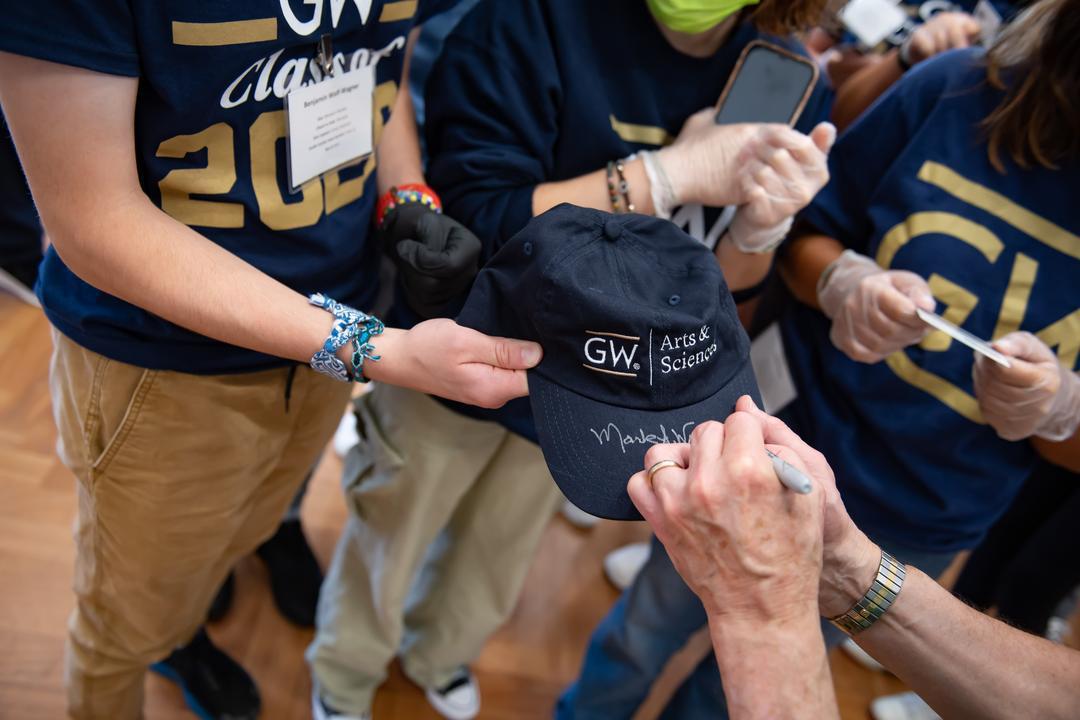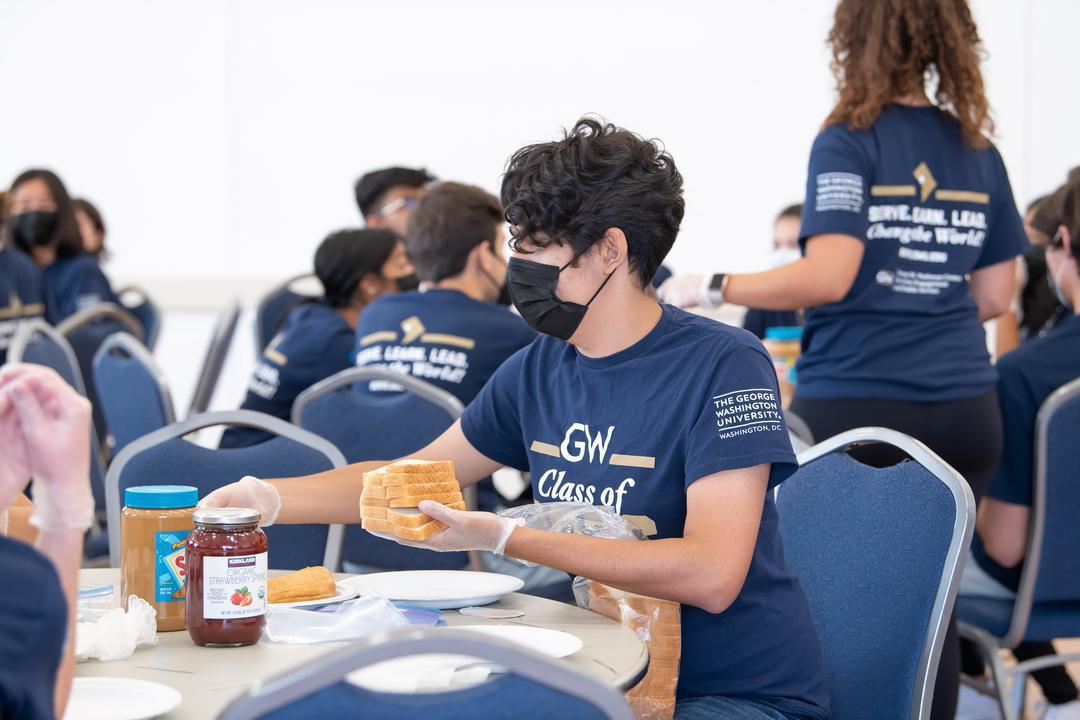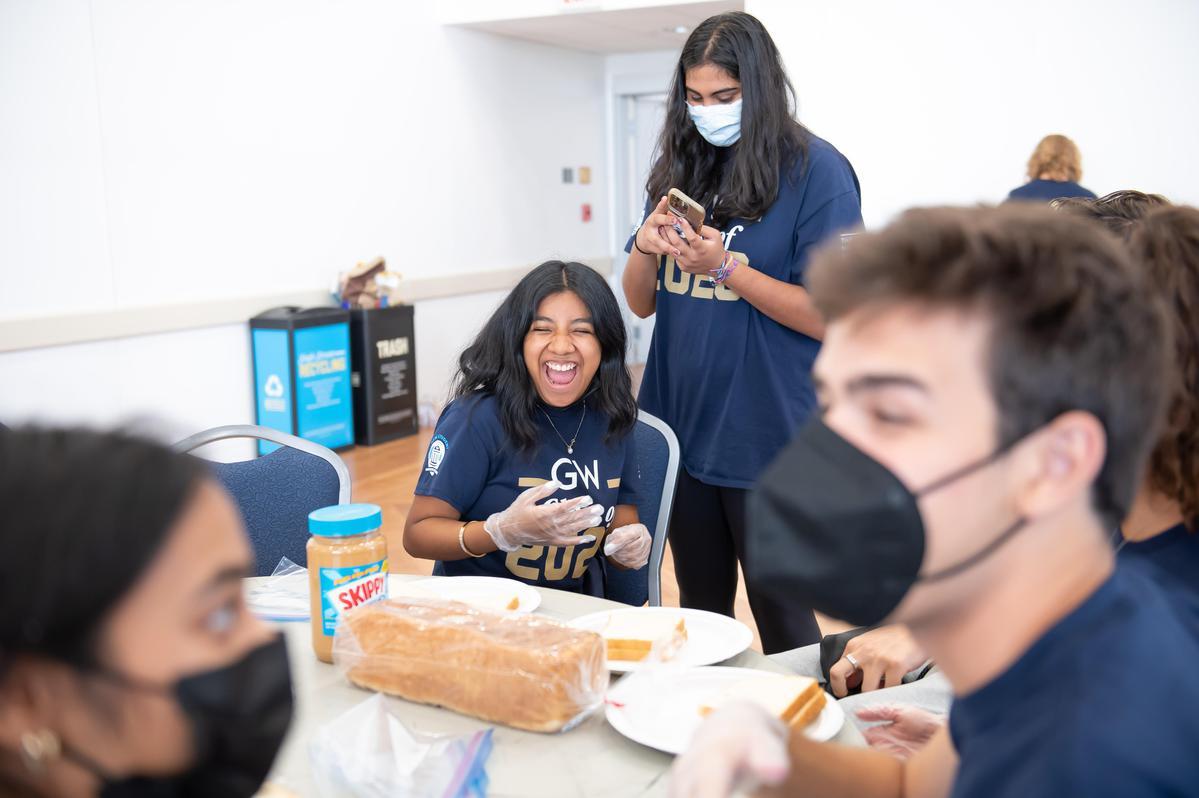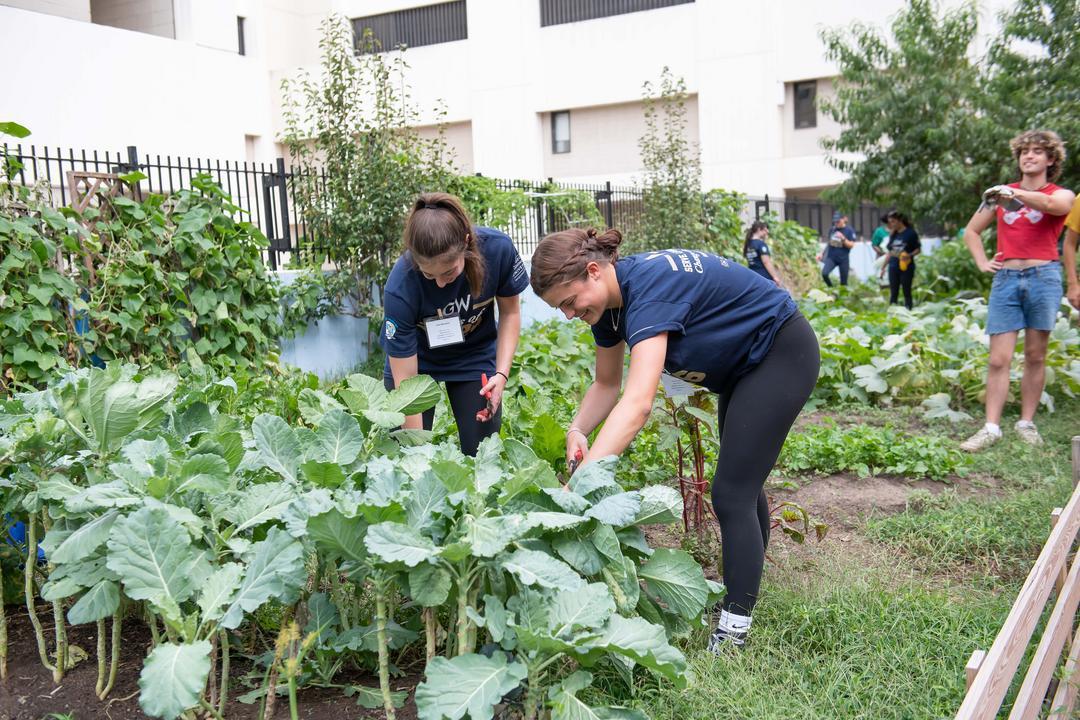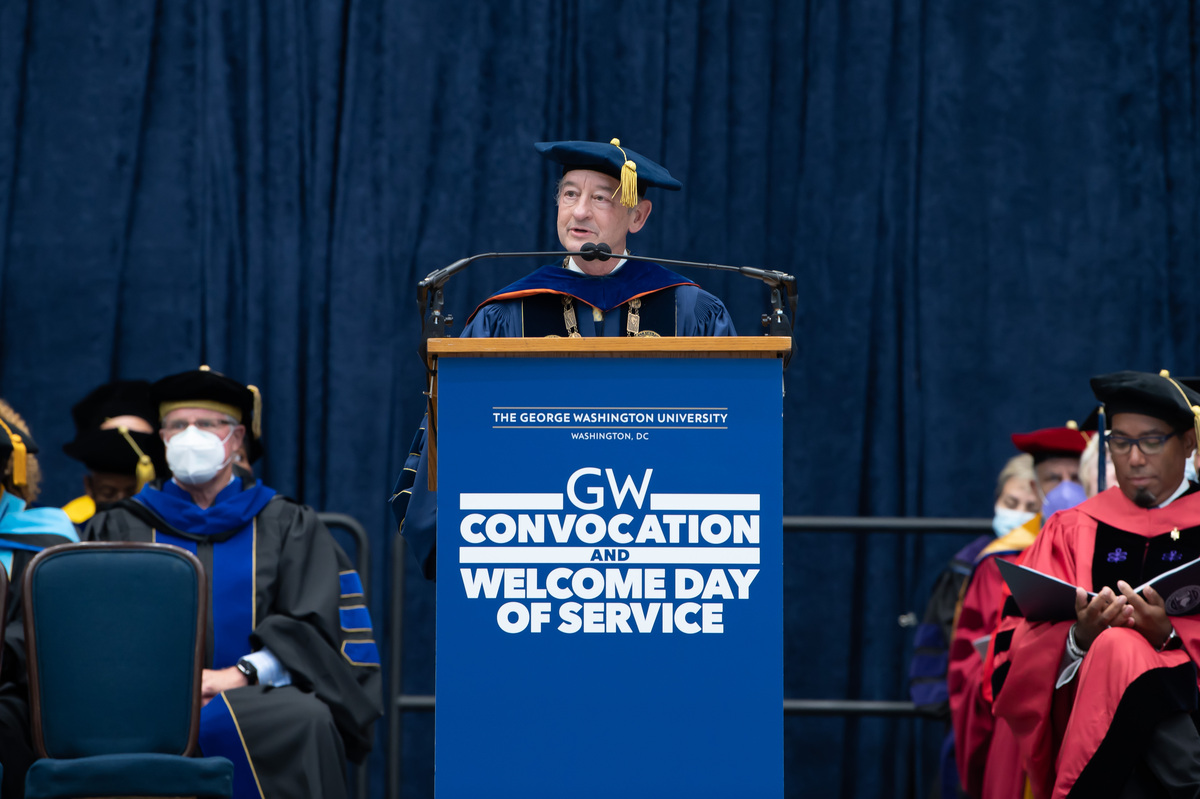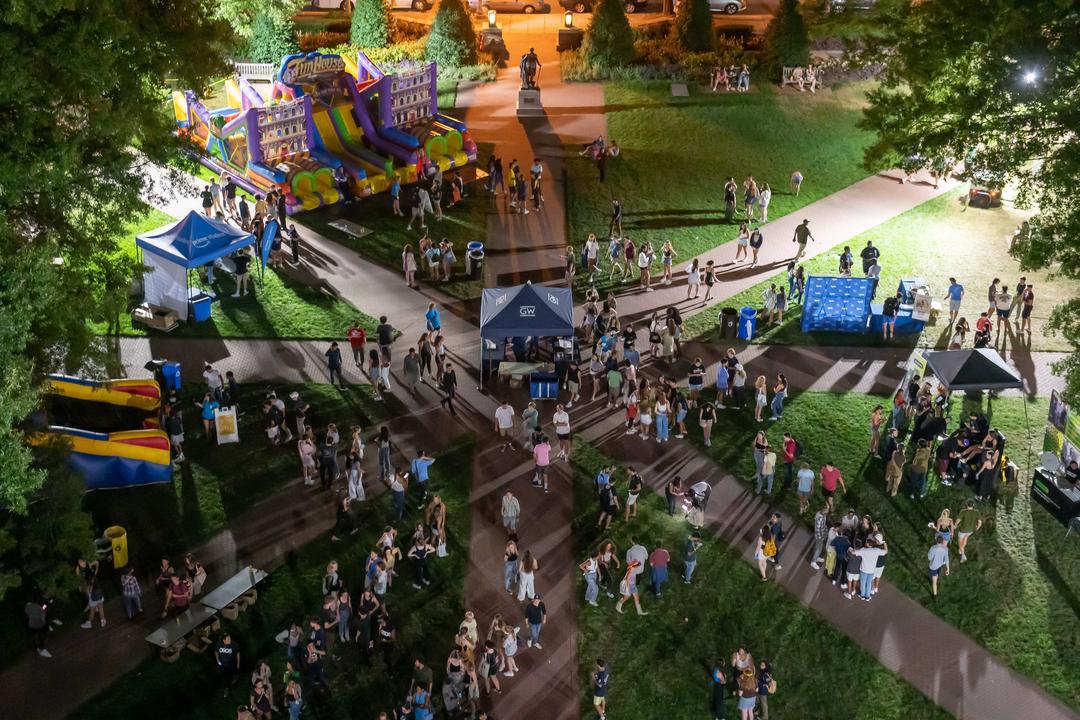By B.L. Wilson
George Washington University student volunteers busied themselves Saturday afternoon clearing weeds, pulling overhanging vines from a fence and removing old mulch from a Foggy Bottom dog park. Others picked up debris and swept a children’s park in the neighborhood near the university’s main campus.
The first-year and transfer student volunteers were joined by members of GW leadership, including President Mark S. Wrighton, who noted at one site that the university “is going to be stronger if its community is stronger, and we’re in the neighborhood, and we want to be surrounded by great neighbors and a great community.”
It was the 14th annual Convocation and Welcome Day of Service and the first fully in-person event since 2019. The project activities at 61 sites—including about 40 schools ahead of the first day of returning to classes for D.C. Public Schools—mostly around the city were organized by the Honey Nashman Center for Civic Engagement and Public Service. At one of the largest school sites, Bruce-Monroe Elementary School in Northwest D.C., more than 125 students helped to paint and spruce up the school, with several students returning on Sunday to finish projects that were left unfinished.
Amy Cohen, executive director of the Honey Nashman Center, said the Welcome Day of Service introduces incoming students to their new home, GW administrators and to opportunities to get involved in the local community. Cohen noted that Washington Monthly rankings for service came out Monday, and GW is No. 3 among national universities for service for the second year in a row.
The students were welcomed at the Children’s Playground by Deborah Baker, senior career counselor, Public Interest Advising and Programs at GW Law School, and Denise Vogt, both members of the Foggy Bottom Association.
“We’ve been trying to build a better relationship with GW,” said Baker, “and what better way than to introduce students to Foggy Bottom on their very first sojourn into the city.”
Vogt, who chairs the association’s history project, told the students that Foggy Bottom once extended on land nonstop all the way to the Potomac River with low-income row houses of hundreds of African American families before they were demolished to make way for highways in the 1950s. The history project includes a partnership with faculty and students in GW’s History Department.
“I want you to think about your place in history and where you are,” Vogt said, “how every day is history in the making and how that affects your understanding of where you now live.”
Arva Arvand, a first-year student from Northern Virginia, pulled weeds from a fence on the playground. She volunteered last year in high school at a retirement home working with Alzheimer’s patients.
After some work at the Children’s Playground, Wrighton headed to the GRoW Garden, a student organized community garden through the GW Office of Sustainability whose produce supports Miriam’s Kitchen, the nonprofit that provides meals and supportive housing to the homeless. Wrighton engaged the garden’s co-managers, seniors Nicholas Smaldone and Raneem Atiyeh, in a conversation about the project’s produce.
Smaldone pointed to “squash, newly planted arugula, chard, Georgia greens and lettuce that should be coming up in a few days, watermelon – that’s our big, exciting thing -- beets, tomatoes, cucumbers, peppers, eggplants, fig tree.” The garden, Atiyeh explained, has been a fantastic way for students to meet people in the community who stop to chat with them and sometimes work with them to maintain the garden.
For Tess Romine, who came to GW from Florida, volunteering at the community garden was a new experience since the soil at home “was too sandy to garden…I love it. It’s completely different from what we can grow.”
Back on campus at the University Student Center Grand Ballroom, members of the Class of 2026 were learning about Miriam’s Kitchen. A large jar of peanut butter and jelly was set on each table, not for the students, but to give them insights into the reality of living on the streets.
Student Nora Goppel said she learned that simple staples such as peanut butter and jelly are a more practical choice when living on the streets. “Unlike ham and cheese sandwiches, peanut butter and jelly doesn’t go bad,” she said. “These sandwiches will be good for a whole week. People who are homeless don’t have access to refrigerators, and the sandwiches are not too sweet and are also soft, so they won’t be bad for people who might have cavities.”
Down the hall, students were learning about Court Appointed Special Advocates of the District of Columbia (CASA DC), a project where GW students are trained to serve as mentors and advocates for young people in the foster care and juvenile justice systems. CASA DC Recruitment and Training Specialist Trina Bray said they were discussing privilege, power and identify and exploring issues such as ethnicity, gender, sexuality and other multicultural characteristics so they can be more comfortable with each other.
Bray said the use of language such as “bias, privilege and respect” is important in that it allows people to see “each other with open hearts, open minds and be more accepting of the circumstances of others and have conversations about that and not judgements.”
When Bray asked students to find a partner and engage in one-on-one conversations about respect, student Jamie Melillo from Basking Ridge, New Jersey, paired off with Myra Qazi, who came to GW from Long Island. Mellilo said she liked the exercises. “I got new perspectives about discrimination, targeted and non-targeted groups, and how a lot of people are privileged because of race, gender and religion.”


